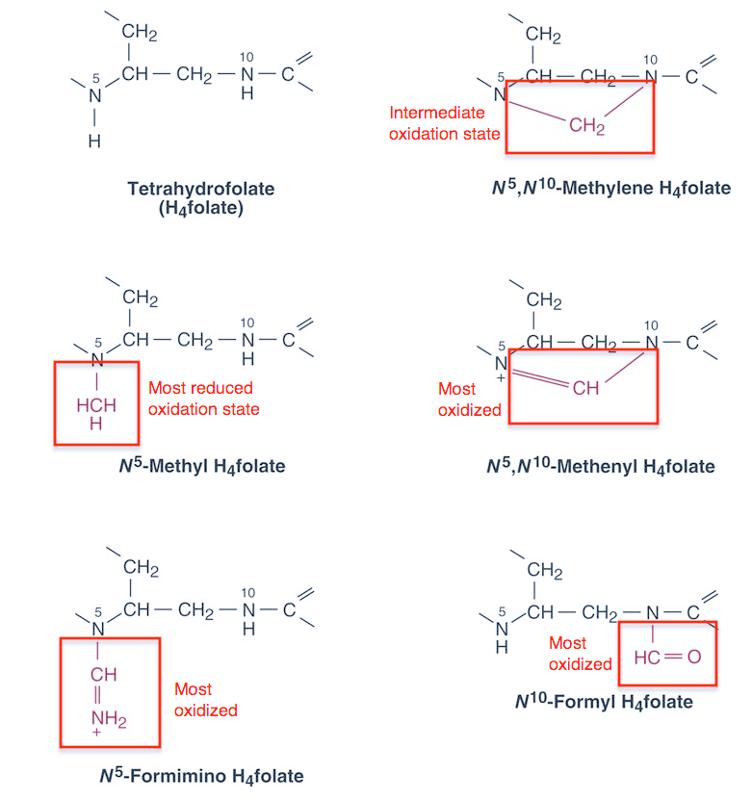One-carbon Metabolism: Basic Concepts
There is a group of biochemical reactions that have a special set of enzymes and coenzymes. They are involved in amino acid metabolism and also play roles in nucleotide metabolism. This group of reactions is referred to as one-carbon metabolism because what they have in common is the transfer of one-carbon groups.
One-carbon metabolism exists because one-carbon groups are too volatile and need to be attached to something while being processed.
A brief summary of the reactions involved in one-carbon metabolism is given in Devlin, Figure 26.17

Essentially, there are three ways of moving groups of atoms containing a single carbon atom using the following molecules:
- Tetrahydrofolate (THF) as a cofactor in enzymatic reactions.
- S-adenosylmethionine (SAM) as a methyl (-CH3) donor.
- Vitamin B12 (Cobalamin) as a co-enzyme in methylation and rearrangement reactions.
TETRAHYDROFOLATE (THF)
THF is the most versatile one-carbon donor in biosynthetic reactions. THF is composed of three types of groups. THF is derived from the vitamin folic acid (folate). Folate is made by plants and microorganisms and we obtain it from our diets e.g., green leafy vegetables, beans, among others. We eat folate and use the enzyme dihydrofolate reductase to convert it into tetrahydrofolate, which is the active form that carries 1-carbon groups in a variety of reactions.
to convert it into tetrahydrofolate, which is the active form that carries 1-carbon groups in a variety of reactions.
The structure of folate is given in Devlin, Figure 26.17.
A key feature of THF is that it can carry a variety of 1-carbon groups.
These are listed in the table below:

There are enzymes whose job it is to attach a 1-carbon group to THF, others to change the nature of that 1-carbon group, and others to transfer the 1-carbon group from THF onto a substrate.
One-carbon groups are being added to or removed from THF and are changing their nature while bound to THF.




